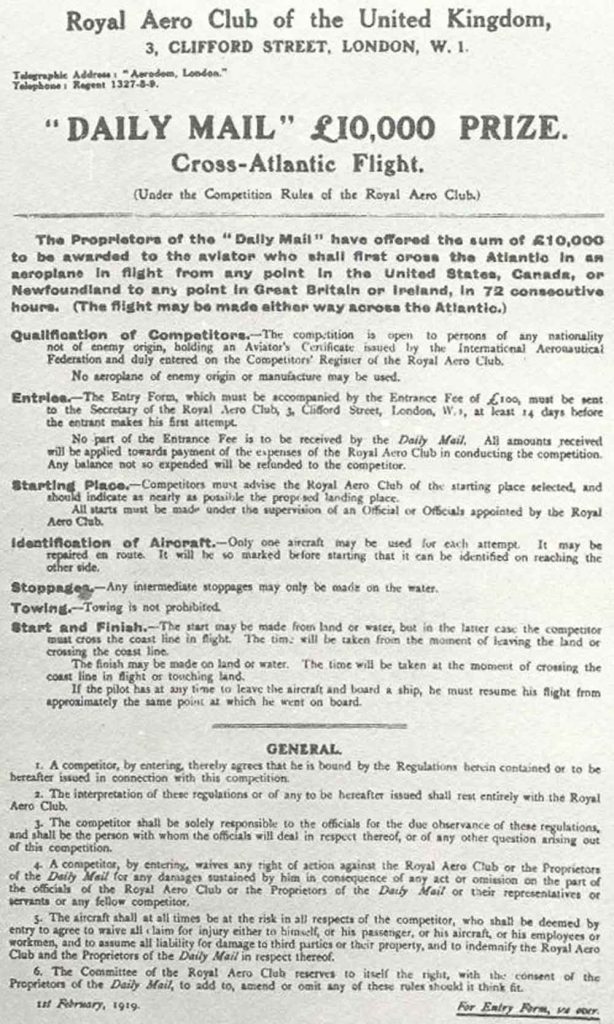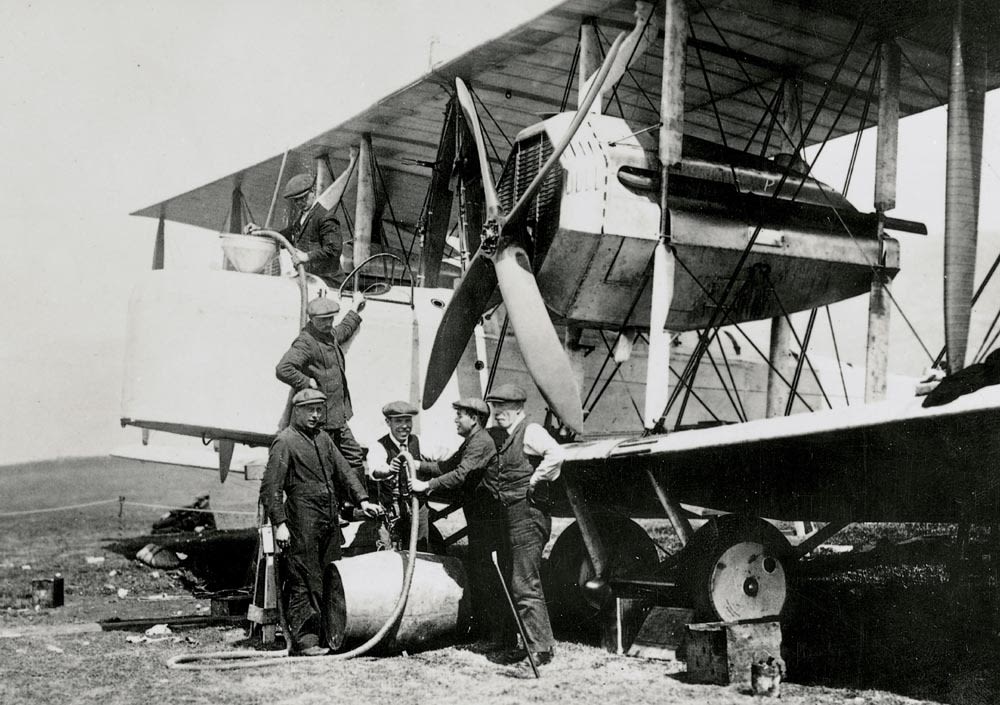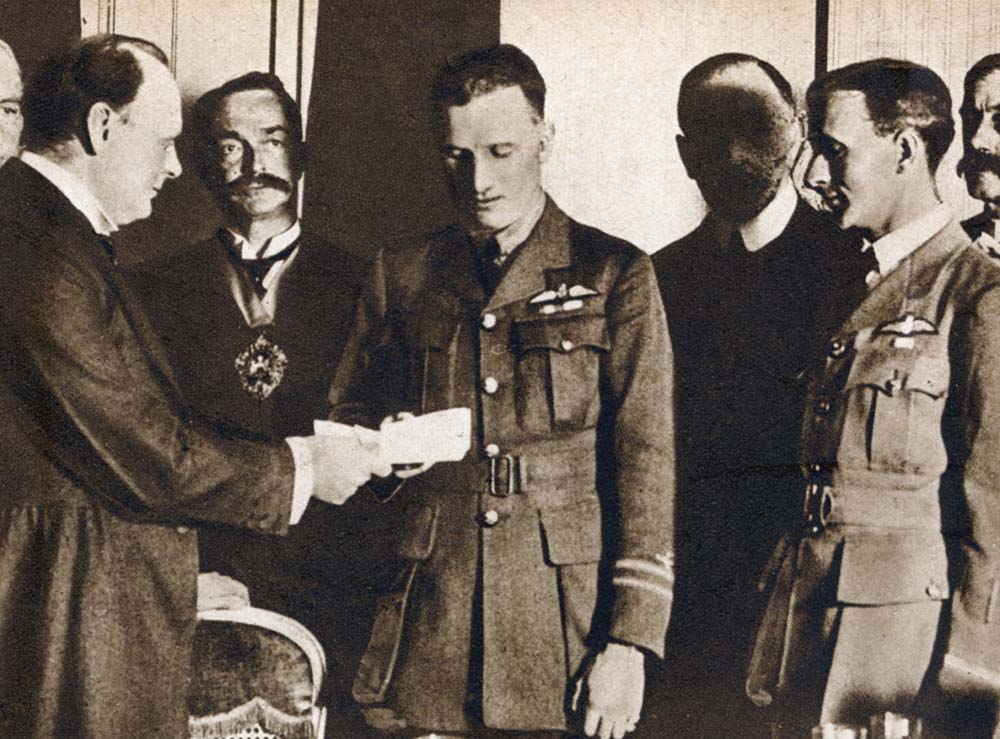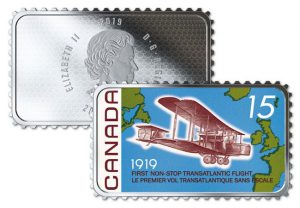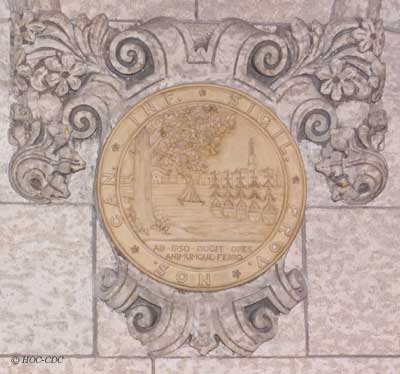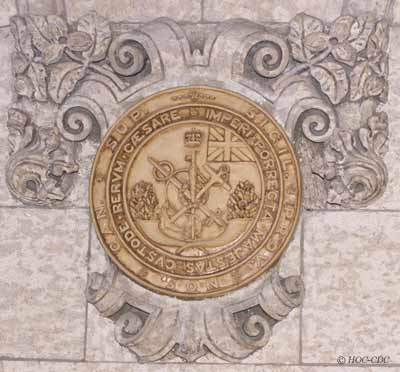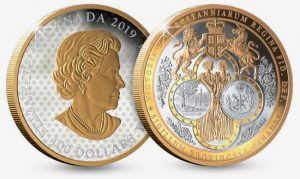Shop
How a £10,000 reward led to one of the greatest advancements in aviation
In the 1800’s, when aeroplanes were a mere twinkle in the eye of ambitious engineers, the idea of transatlantic flight came about with the advent of the hot air balloon. But one crash-landing, and one postponement due to the American Civil War meant this dream had to go back to the drawing board.
On the other side of the pond, in April of 1913 The Daily Mail newspaper offered a cash prize of £10,000 to “the aviator who shall first cross the Atlantic in an aeroplane in flight from any point in the United States of America, Canada or Newfoundland and any point in Great Britain or Ireland in 72 continuous hours”.
But it wasn’t until after the end of WWII that transatlantic flight by aircraft became truly viable, thanks to the significant advancements in aerial capabilities and technology.
Then the competition really heated up…
Nail-biting four-way competition
What came was a nail-biting four-way contest against the clock as well as each other. Four different ‘teams’ formed and went to work to try and prepare their chosen aircraft the fastest, for fear of being pipped to the post by another team making their attempt sooner. To make it a fair contest, each team had to ship their aircraft to Newfoundland for the take-off.

First to try was Australian pilot Harry Hawker and navigator Kenneth Mackenzie Grieve, piloting a Sopwith Atlantic – an experimental British long-range aircraft. In flight the aircraft suffered from engine failure and, when coupled with poor weather conditions, the decision was made to abort the mission.
The aircraft was abandoned in the Atlantic Ocean, 750 miles from Ireland, and the pair were rescued by a Danish steamer SS Mary. Due to the SS Mary not having any radio contact, the pair were presumed dead and King George V sent a telegram of condolence, but luckily this wasn’t the case as the pair arrived back on land nearly a week later.
The next attempt wasn’t nearly as exciting, as the aircraft never left the take-off zone. Frederick Raynham and C. W. F. Morgan made the attempt in a Martinsyde but crashed on take-off due to the heavy fuel load.
Then came the turn of aviator duo, John Alcock and Arthur Brown, who flew straight into the history books on June 15th 1919…
Flying in to the unknown across the Atlantic
The Vickers engineering and aviation firm, which had considered entering its Vickers Vimy IV twin-engine bomber in the competition, appointed Alcock as the team’s pilot along with Brown who was adept at long-distance navigation.
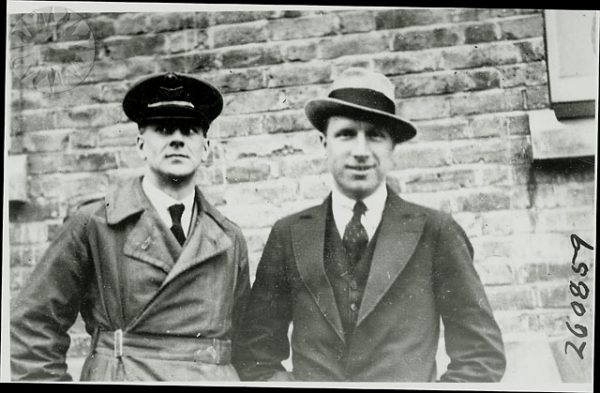
In preparation for the transatlantic flight, The Vimy, powered by two Rolls-Royce Eagle 360 hp engines, was successfully converted, including replacing its bomb racks with extra petrol tanks.
The pair took off from St. John’s, Newfoundland, in their modified bomber around 1:45pm on 14th June 1919. To say it wasn’t an easy flight would be an understatement. They encountered both mechanical and natural challenges. The wind-powered generator failed, depriving them of radio contact and much needed heating in their open-top cockpit. Fog and a snowstorm prevented navigation, almost resulting in a crash-landing at sea, not to mention the snow and freezing conditions meant the engines were in danger of icing up.
Whilst they were set a 72-hour target by The Daily Mail, the duo made landfall in Clifden, County Galway, in Ireland at 8:40am on 15th June 1919 – after just 16 hours of flight!
Incredibly, they landed not far from their intended landing zone in Ireland. However, the aircraft was damaged upon arrival because what looked like a field from their aerial view turned out to be a bog, causing the aircraft to nose-over. Thankfully neither were hurt, and Brown claimed that if the weather had been good, they’d have been able to continue to London.
A hero’s return to a £10,000 reward
Alcock and Brown’s successful attempt meant that the fourth team, Handley Page Limited, who were yet to take-off, were no longer eligible to compete. The two airmen returned home as aviation heroes and pioneers of the sky.
As promised, Alcock and Brown were rewarded for their ground-breaking achievement – the £10,000 prize money offered by The Daily Mail, for the first crossing of the Atlantic in less than 72 consecutive hours.
The Secretary of State for Air at the time, Winston Churchill, presented the pair with their cash reward. Then one week later, at Windsor Castle, they were awarded the honour of Knight Commander of the Most Excellent Order of the British Empire by King George V.
If you’re interested…
The Royal Canadian Mint marked the milestone 100th anniversary of this remarkable achievement and feat of engineering with a limited edition 1oz Silver Proof coin. The coin features a faithful colour reproduction of the commemorative stamp that was issued to mark the 50th anniversary.
Unsurprisingly the coin proved so popular that it is no longer available at the Mint! We have a limited number remaining, click here for more information >>
The Great Significance of Great Seals
Everyday we’re inundated with symbols and logos, and many of them pass us by. Be it on an advert at a bus stop, on our favourite brand of coffee, or even the Westminster Collection logo that was at the top of this blog. They’re everywhere. And even if we do pay attention to them, we don’t necessarily stop and think what it symbolises – I know I’m certainly guilty of this.
But there’s perhaps nothing quite as symbolic as a nation’s Great Seal – and they’re fascinating to boot! Great seals have been around since the Middle Ages, and typically feature a nation’s coat of arms or an allegorical image, as was common practice during this era to embody political entities like countries or provinces as a Grecian-style female figure.
In centuries when few people could read or write, the seal provided a pictorial expression of state approval which all could understand. They’re used as a guarantee of the most important and solemn records and documents, such as laws and treaties.
Generally speaking, the design of a Great Seal rarely changes, only after the ascension of a monarch. It is the one thing that connects all heads of state to their predecessors and those yet to come; an eternal bond.
But a delve into the Canadian archives shows us that the Great Seal of Canada has had several incarnations, and not just to mark a new head of state. Instead, each one marks a significant moment in Canadian history.
One of the most important iterations of the seal is the Great Seal of the Province that was used from 1841 to 1867. This seal is seen to mark one of the most important changes in Canada’s history – let’s take a look…
The Great Seal of the Province of Canada
In 1841 the two major British colonies of Lower and Upper Canada, now Quebec and Ontario respectively, were brought together under a single government and economy for the first time.
It was Canada’s first move toward responsible government and, according to the Canadian Encyclopaedia, was a “26-year experiment in Anglophone-Francophone political cooperation.”
Before the merger, Lower and Upper Canada had their own individual seals. To solidify the merge a new seal was created by placing the two existing seals side by side, held together by two allegorical figures with their arms around each other’s shoulders marking the unity of the two colonies.
To complete the design, the Royal Arms of the ruling monarch of the time, Queen Victoria, was incorporated over the top of the entire scene.
Steeped in symbolism
Importantly, every element in the detailed design was symbolic. Representing unity and Canada’s ties to Great Britain, some of the key elements include:
- Lower Canada seal: engraved by Thomas Major in 1793, it depicts a graceful oak tree on the bank of a river overlooking several ships at anchor, with a typical Quebecois town featuring a church steeple in the background.
- Upper Canada seal: originally designed in 1792 it features a peace-pipe crossed with a sword and an anchor, bound by an olive crown. The Union Jack is visible in the upper right-hand corner, alongside the royal crown.
- The royal arms of Queen Victoria: Victoria’s shield, held up by the lion (England) and the unicorn (Scotland).
- Two allegorical figures: two figures embrace each other with one hand while holding up the seals of Upper and Lower Canada with the other, symbolising the coming together of the colonies.
- Floral ornamentations: the seal is decorated throughout with the Scottish thistle, English rose, and Irish shamrock.

If there was any doubt as to how important this seal is and what it represents to Canada in terms of its history and heritage, then look no further than Canadian Parliament. Here you’ll find two original limestone carvings of the Great Seal of Province – a permanent reminder of the historic union of Lower and Upper Canada.
If you’re interested…
The Royal Canadian Mint is known for being fiercely proud of their country’s history, consequently their most significant issue of 2019 featured the Great Seal of the Province of Canada.
Expertly struck from ten full ounces of the finest .9999 silver with gold plating to a flawless proof finish this coin really has to be seen to be believed. And because of the impressive 76mm diameter you can appreciate every minute detail of the faithful reproduction of the Great Seal.
Just 900 coins were issued worldwide and it completely sold out at the Mint. We have a few of these masterful coins remaining, click here for more information >>
Uncovering the British discoveries that inspired the Dinosaur 50p coins
I’ve always loved dinosaurs. As a child I’d be glued to the TV watching The Land Before Time and Jurassic Park, and I lost count of the number of family outings to the Jurassic Coast just so I could comb the beaches looking for fossils – I found a few ammonites, but alas no dinosaur bones!
The fact that their time on Earth remains mostly a mystery has fuelled our fascination with them for years. So, I’m sure many collectors shared my excitement when The Royal Mint announced a new UK 50p coin series dedicated to the celebration of dinosaurs. And if you’re a dinosaur enthusiast like me, I’m sure you’ll appreciate the special design details of these coins, that pay tribute to the British discoveries at every possible turn…
Dinosauria
What you may not know is that whilst fossils have been found on every continent on Earth, the study of dinosaurs actually started right here in the UK. In fact, over 50 to 60 species have been discovered beneath out feet.
The term ‘dinosaur’ that we use today comes from the term ‘Dinosauria’, which was coined by British Anatomist Richard Owen in a paper published in 1842. Owen was the first to realise that the remains of three creatures found in various locations within the UK shared common characteristics.
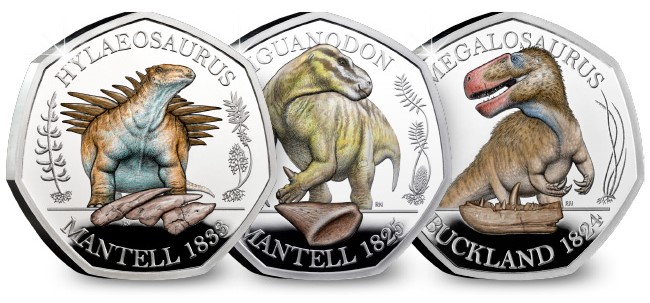
To celebrate Owen’s ground-breaking conclusion, the first three creatures that led him to his discovery have been featured on a UK 50p. Issued in collaboration with the Natural History Museum each one has been expertly brought-back to life by palaeo-artist Robert Nicholls.
Megalosaurus
Megalosaurus comes from the Greek for ‘great lizard’, and at seven to eight metres long it certainly lives up to its name! In terms of its appearance it can be compared to a T-Rex and comes from the same family of large carnivorous dinosaurs that can walk on two legs.
The Megalosaurus is the first dinosaur to ever be officially named in scientific literature. It’s thought that the earliest evidence of a Megalosaurus was found as early as the 17th century, but it wasn’t until years after it was first discovered that it was termed a dinosaur.
It was in 1824 that palaeontologist William Buckland produced the first scientific description of a Megalosaurus, based on fragments of jaw and bone found in Oxfordshire. This is the first non-aviation dinosaur to be formally named.
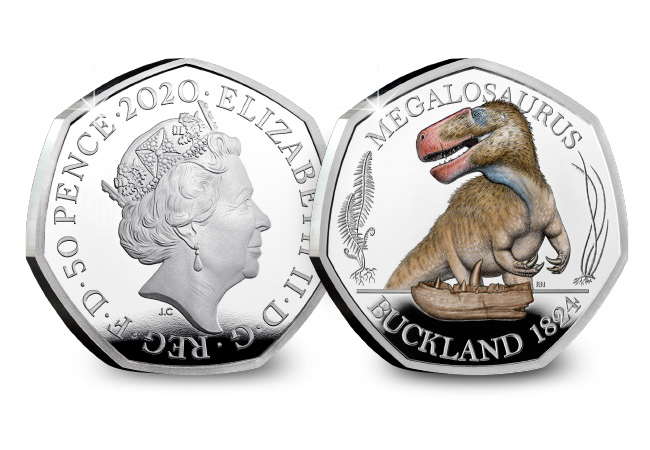
You’ll notice on the 50p coin that the Megalosaurus is framed by a jaw fragment, as a nod to the fossil that gave Buckland his breakthrough. Likewise, Buckland is featured, as is the year of the discovery, 1824.
Iguanodon
It was in 1822 that Mary Mantell spied a large tooth at the side of the road in Sussex, and upon pulling over realised it belonged to an unknown creature. Her husband, Geologist Dr Gideon Mantell, noticed that the tooth was similar to that of an iguana, and later in 1825 came to call it an Iguanodon. This was the second dinosaur species to receive its name.
It wasn’t until several years later in 1834, when an explosion in Maidstone revealed fragments of an ancient skeleton that Mantell could conceptualise what an Iguanodon may have looked like.
As well as distinctive iguana-like teeth, other distinctive features of an Iguanodon include its large thumb spikes, which were possibly used for defence against predators, combined with long fifth fingers capable of grasping, allowing them to forage for food. The creatures belong to the dinosaur family of medium-sized herbivores that usually walked on two legs.

You’ll see that the 50p design credits Mantell with the discovery in 1825, and also depicts the tooth that originally sparked the naming of the creature as an Iguanodon.
Hylaeosaurus
And last, but no means least is the Hylaeosaurus, the third dinosaur to be officially discovered and scientifically named.
Out of the three first dinosaurs to be discovered, it is the Hylaeosaurus’ anatomy that we know the least about as little remains have been uncovered. It is thought that the Hylaeosaurus was a herbivorous, armoured creature, around five meters long with spikes along its back. Its name means ‘woodland lizard’ and is in the same family as the Stegosaurus.
It was again Dr Gideon Mantell who can be credited with the discovery of the Hylaeosaurus. The first remains of the creature were found in Sussex in 1832, and astonished Mantell because the discovery was the most complete non-aviation dinosaur skeleton known at the time. The discovery included several spikes and armour plates, for which this dinosaur is now known. But it wasn’t until 1833 that Mantell published his findings, and the creature was officially named Hylaeosaurus.
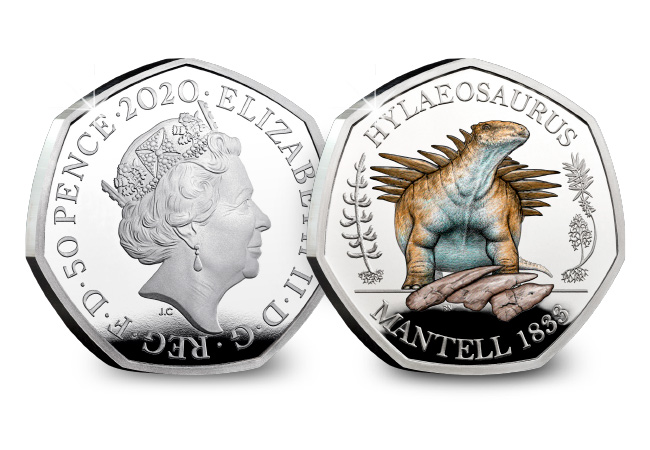
The design of the 50p again incorporates important details about the discovery of the Hylaeosaurus. You’ll see Mantell is noted alongside the year of discovery, 1833, and the initial spikes that were discovered as part of the first skeleton.
If you’re interested…
The Dinosaur 50p series has proven tremendously popular with collectors, not least because this is the first time dinosaurs have ever featured on UK coinage. That said, it’s been the Coloured Silver Proof 50ps that have stolen the show.
We’re lucky to be able to offer a select number of collectors the chance to secure the Complete Silver Dinosaur 50p Collection today. Importantly, we’ve seen precious metal sell-outs across the range, so this is likely to be your only opportunity to secure ALL THREE Dinosaur 50ps in superior Silver Proof quality. Click here to find out more >>

